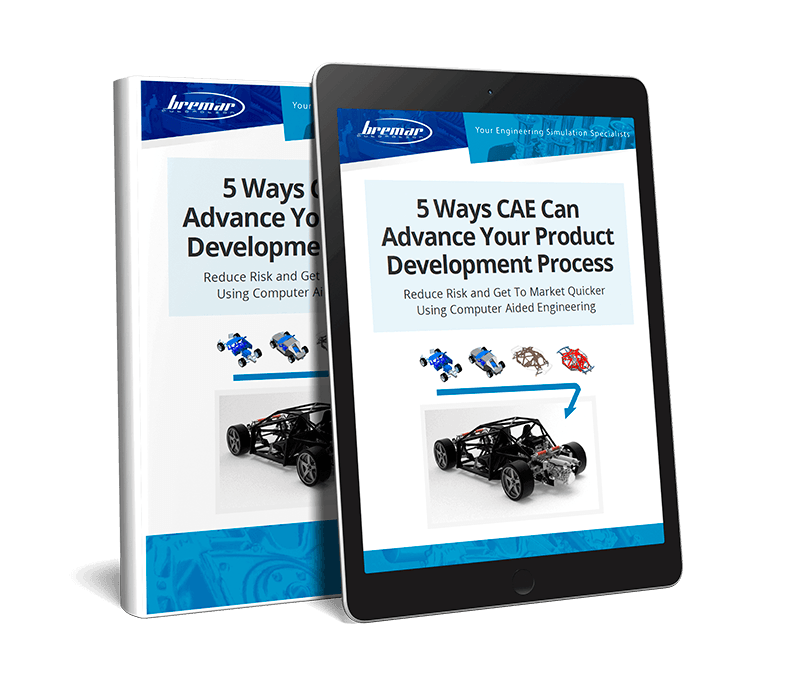4 Bar Rear Suspension

Cartech recently approached us to provide some guidelines on triangulated 4 bar rear suspension systems, particularly around the strength of the arms and the loads that go into the chassis. This was not an analysis of a specific suspension kit, but more of a general analysis to see which parameters the 4 bar linkage was sensitive to and what to look out for when assessing these type of systems.
The triangulated 4 bar is a suspension system for a solid rear axle, more commonly seen on older cars. The upper links are angled to hold the axle in place laterally, and because of this, they don’t require a panhard rod or watts link, as shown in the images below. The downside of this is that they don’t function as a pure mechanism, and rely on some compliance (or flex) somewhere in the system, either in the bushes or in the arms themselves. Too much compliance and the car will feel loose, too little compliance, and the arms or chassis can start cracking. Even replacing the standard rubber bushes with urethane bushes can be enough to increase loads in the system significantly.
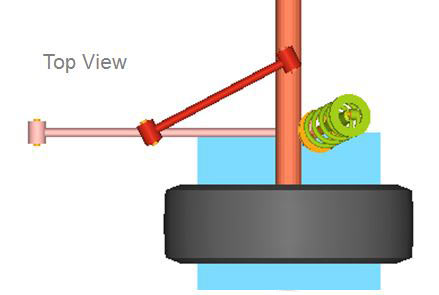
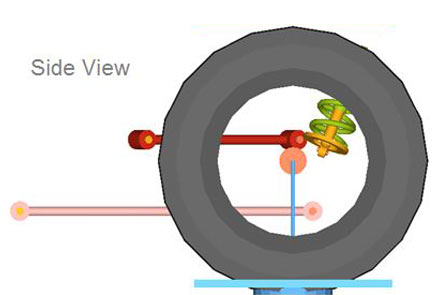
We used Altair MotionSolve, a Multi Body Dynamics (MBD) simulation package, to assess the suspension system for a range of loadcases and setups. We started with a basic model of the rear suspension only, where each body is rigid, and we had a look at the ride and roll characteristics of the system, along with some of the loads in system and the roll steer effects of the geometry:
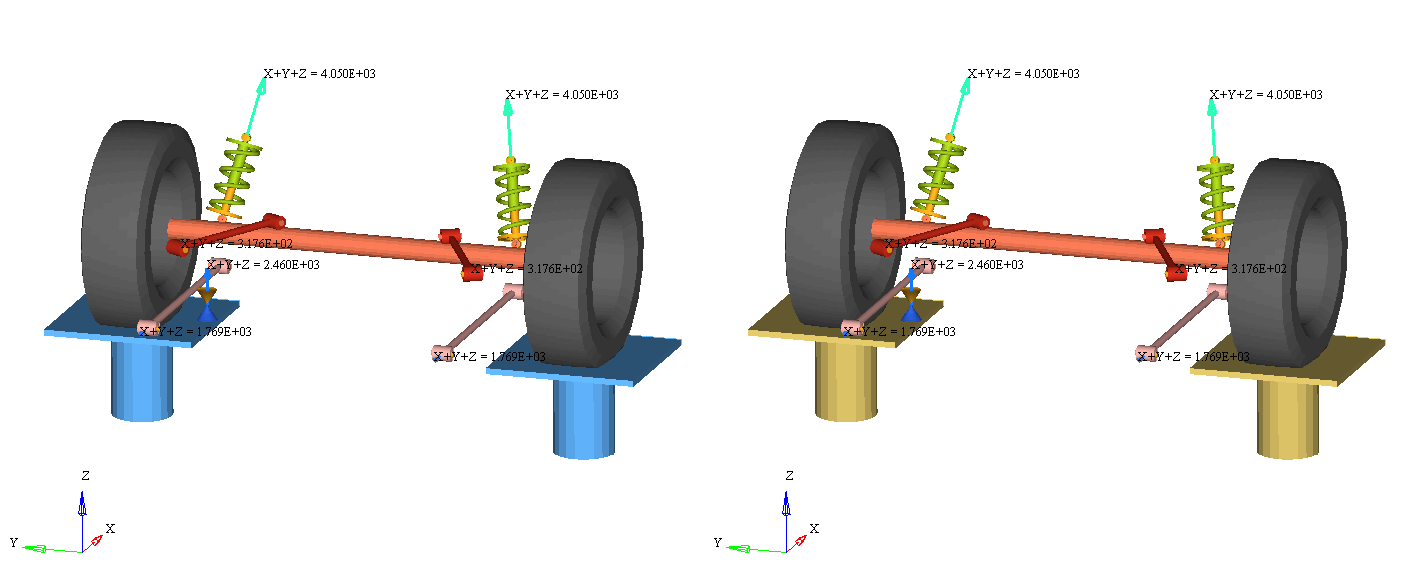
Ride and Roll Animations
We then moved on to building a full vehicle MBD model, which allows us to drive the car virtually through certain real world scenarios. For these full vehicle simulations, we also modelled part of the chassis rails and the suspension arms as “flexbodies” which means these components can deform under load and output the resulting stresses.
In this case, we chose a high speed turn to induce cornering loads in the system, and also a low speed ramp approach, which induced high roll angles. The animations below show results from each simulation, with an overview animation on the left and a closeup of stresses on the right:
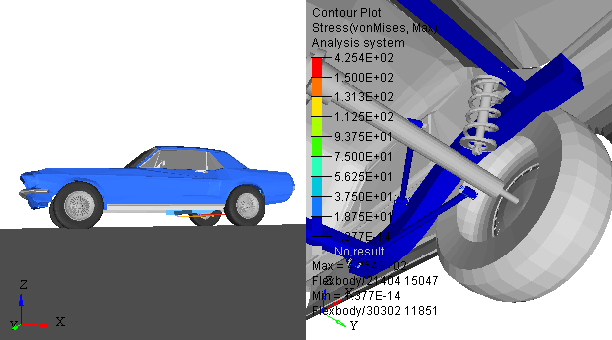
High Speed Turn Animation
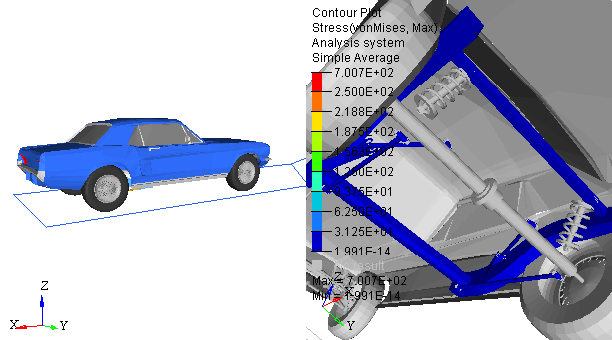
Low Speed Ramp Animation
We ran all of these simulations multiple times, each time varying parameters such as bush stiffness, changing bushes to spherical joints and altering the angle of the upper arms. This gave Cartech a very broad overview of how these triangulated 4 bar suspension systems perform over a wide range of setup conditions, and they are now armed with the knowledge they need to confidently assess this type of suspension system.
RETURN TO CASE STUDIES

